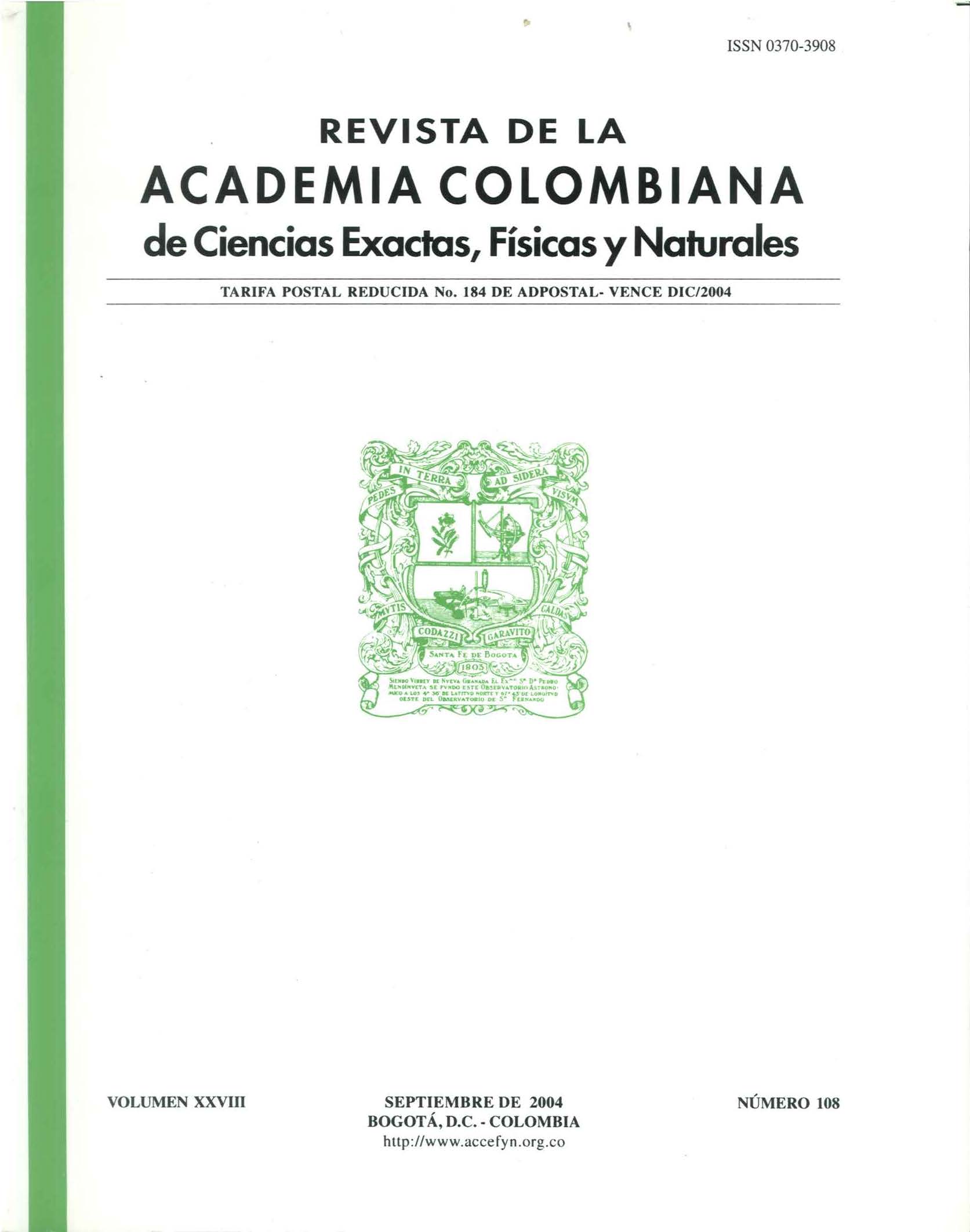Abstract
A Monte Carlo algorithm was developed in order to simulate nitrogen adsorption isotherms on active carbons. The pore was modeled by a slit-shaped cavity formed by graphitic carbon layers. The density of solid and the number of layers were optimized. The pore size distribution was obtained using the simulated isotherms of some active carbons obtained in the laboratory. The results were compared with those of a commercial software using density functional theory.
Keywords
References
Bansal, R. C., Donnet, J.B. and Stoeckli F., 1988. Active carbon. Marcel Dekker, New York.
Bottani, E., 1996. Simulaciones Monte Carlo: una poderosa herramienta aplicada al estudio de la adsorción física de gases sobre sólidos. Anales de la Sociedad Científica Argentina, 226 (1): 65 - 81.
Cracknell, R. F., Gordon P. and Gubbins K. E., 1993. Influence of pore geometry on the design of microporous materials for methane storage. Journal of Physical Chemistry, 97 (2): 494 - 499.
Davies, G. M. & Seaton, N. A., 1999a. Development and validation of pore structure models for adsorption in activated carbons. Langmuir, 15 (19): 6263-6276.
Davies, G. M., Seaton, N. A. & Vassiliadis V. S., 1999b. Calculation of pore size distributions of activated carbons from adsorption isotherms. Langmuir, 15 (23): 8235-8245.
Fernández, J. J., Flórez E. & Mondragón F. 2000. Aproximación a la distribución de porosidad de un semicoque gasificado con CO2 y H2O. En: Memorias del V Congreso Nacional de Ciencia y Tecnología del Carbón. Universidad Popular del Cesar. Valledupar. pp: 499-502.
Frenkel, D. & Smit B., 2002. Understanding molecular simulation: From algorithms to applications. Academic Press. San Diego.
Gubbins, K. E. & Quirke N., 1996. Molecular simulation and industrial applications: Methods, examples and prospects. Gordon and Breach Science Publishers. Amsterdam.
McEnaney B., Mays T. J. & Chen X., 1998. Computer simulation of adsorption processes in carbonaceous adsorbents. Fuel, 77 (6): 557 - 562.
Mondragón, F., Quintero, G., Jaramillo, A. & Fernández J. J., 1997. The production of high surface carbons from coal using pre-swelling in solvents to disperse coking catalysts. Journal of Materials Science, 32 (8): 1455-1459.
Oliver, J. P. & Conklin, W. B. 1996. Determination of pore size distribution from density functional theoretic models of adsorption and condensation within porous solids. En: DFT plus models library: User’s guide. Micromeritics Instrument Corporation. Norcross.
Ravikovitch P. I., Vishnyakov A., Russo R. & Neimark A. V., 2000. Unified approach to pore size characterization of microporous carbonaceous materials fron N2, Ar, and CO2 adsorption isoterms. Langmuir, 16 (5): 2311-2320.
Rouquerol, F., Rouquerol J. & Sing K., 1999. Adsorption by powders & porous solids. Academic Press. London.
Setoyama, N., Suzuki T. & Kaneko K., 1998. Simulation study on the relationship between a high resolution as -plot and the pore size distribution for activated carbon. Carbon, 36 (10): 1459-1467.
Silbernagel, B. G., Gebhard L. A., Flowers II. R.A. & Larsen J. W., 1991. Demineralization effects on the EPR properties of Argonne Premium Coals. Energy & Fuels, 5 (4): 561-568.
Webb, P. A. & Orr C., 1997. Analytical methods in fine particle technology. Micromeritics Instrument Corporation. Norcross.
Yin, Y. F., McEnaney B. & Mays T. J., 1998. Dependence of GCEMC simulations of nitrogen adsorption on activated carbons on input parameters. Carbon, 36 (10): 1425-1432.

This work is licensed under a Creative Commons Attribution-NonCommercial-NoDerivatives 4.0 International License.
Copyright (c) 2023 https://creativecommons.org/licenses/by-nc-nd/4.0





